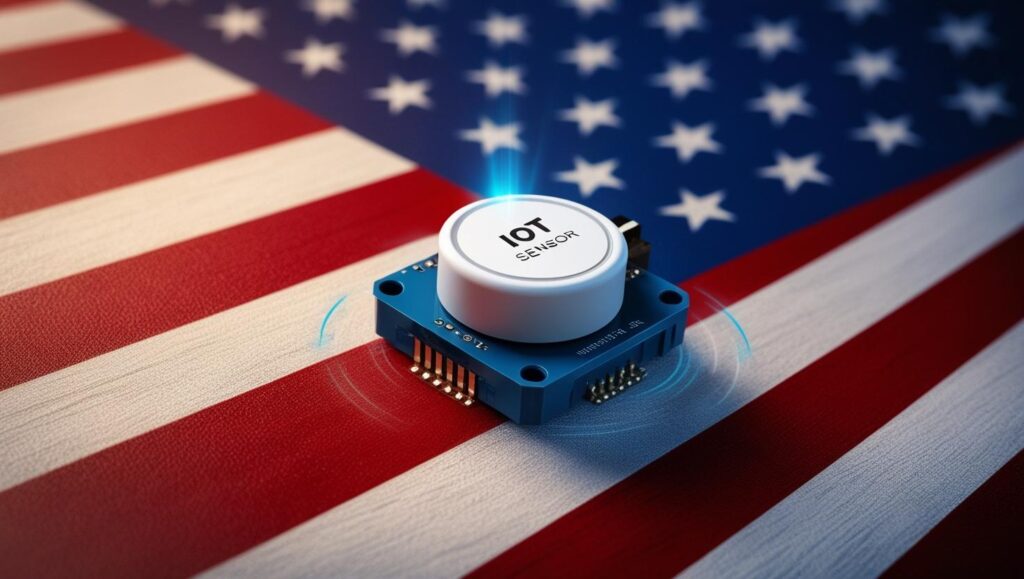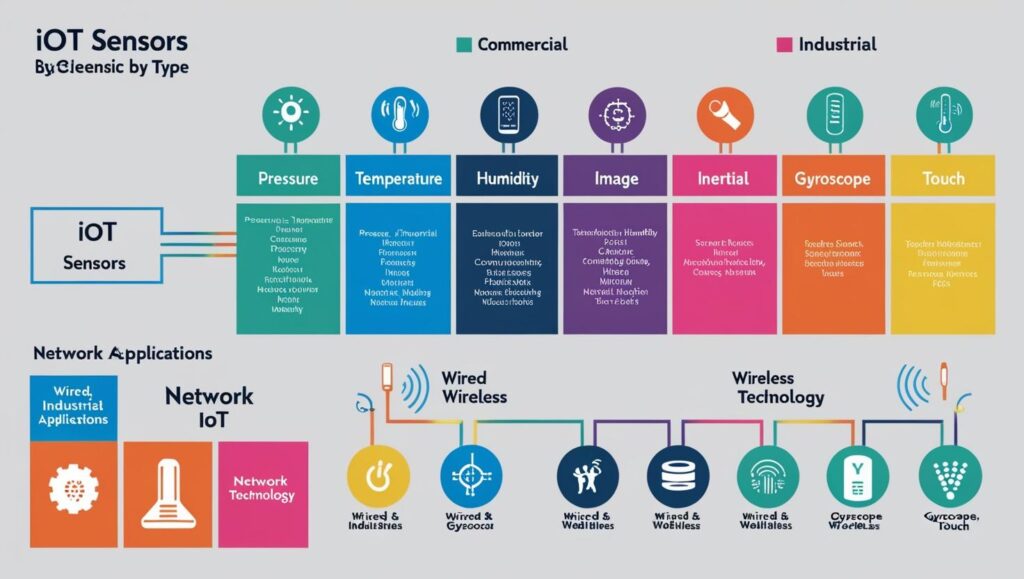The global trade landscape has shifted dramatically over the past few years, particularly with the implementation of tariffs by the Trump administration. These trade policies, which targeted key imports from China and other countries, had a far-reaching impact on various industries, including the Internet of Things (IoT) sensors market. Tariffs on raw materials, components, and finished products significantly disrupted supply chains, increased manufacturing costs, and forced companies to adapt to new economic realities.
However, rather than stifling innovation, these tariff disruptions have catalyzed new trends and innovations within the IoT sensors market. From supply chain diversification to a surge in demand for more cost-efficient solutions, companies are navigating the challenges and reshaping their strategies. In this article, we explore the top 10 IoT sensor trends driven by tariff disruptions.
1. Supply Chain Diversification and Regionalization
Tariff-related disruptions have prompted many companies to diversify their supply chains. With heightened tariffs on Chinese imports, IoT sensor manufacturers are turning to alternative suppliers and relocating production closer to home. Southeast Asia, Mexico, and other regions have emerged as viable alternatives, helping reduce reliance on single countries and mitigate the effects of trade disputes.
Impact:
Reduced vulnerability to tariff impacts
Improved flexibility in meeting customer demands
2. Increased Adoption of Edge Computing
The surge in tariffs on certain components has motivated companies to seek more cost-efficient and decentralized processing solutions. As a result, edge computing is gaining traction in the IoT sensors market. Edge computing involves processing data closer to where it is generated, reducing the need for expensive data center infrastructure and minimizing reliance on cloud services that may be subject to tariffs.
Impact:
Lower data processing costs
Enhanced real-time capabilities
Reduced dependency on foreign infrastructure
3. Shift to Cloud-Based Solutions
The increased cost of physical hardware due to tariffs has spurred the growth of cloud-based IoT solutions. By leveraging cloud platforms, IoT sensor manufacturers can reduce upfront costs and offer more scalable solutions to customers. This shift also enables companies to quickly update and deploy sensor software without the need for costly hardware upgrades.
Impact:
Reduced reliance on expensive hardware
Scalable, flexible solutions for businesses of all sizes
Request Trump Tariff Threat Assessment Analysis Now:
https://www.marketsandmarkets.com/pdfdownloadNew.asp?id=26520972

4. Innovation in Low-Cost Sensors
The tariffs on certain components have led to higher production costs for IoT sensors. To address the price hikes and maintain competitiveness, many companies are focusing on the development of low-cost sensors that maintain performance while reducing manufacturing expenses. This trend is especially prominent in consumer-facing sectors like smart homes and wearables, where affordability is key.
Impact:
Expansion of affordable IoT solutions
Increased market penetration for IoT in low-cost applications
5. Rise of Automation and AI Integration
Tariffs have made it more expensive to manufacture certain types of sensors, prompting many companies to embrace automation and artificial intelligence (AI) to increase efficiency. AI is being integrated into IoT sensors to enhance data analytics capabilities, improve predictive maintenance, and reduce the need for manual labor in production processes.
Impact:
Improved efficiency and reduced labor costs
Smarter, more autonomous sensors capable of real-time decision-making
6. Expansion of Smart Manufacturing
Tariff disruptions have accelerated the adoption of smart manufacturing technologies, where IoT sensors play a crucial role. By implementing Industry 4.0 solutions, manufacturers can improve production efficiency, reduce costs, and better manage inventory. IoT sensors, combined with 5G and AI, enable real-time monitoring and automation of the manufacturing process.
Impact:
Streamlined operations and reduced production downtime
Increased demand for IoT sensors in industrial environments

7. Greater Focus on Data Security
As IoT devices become more ubiquitous, there is growing concern about the security of data transmitted between sensors and cloud platforms. With tariffs increasing costs on imported components, companies are investing more in data security to protect customer information and ensure compliance with data privacy regulations. This trend is pushing the development of more secure and encrypted IoT sensors.
Impact:
Enhanced trust and adoption of IoT devices
Growing emphasis on cybersecurity within IoT ecosystems
8. Demand for Modular Sensors
Tariffs have caused price increases for many IoT sensor components, pushing businesses to seek modular sensor solutions that offer greater flexibility and scalability. Modular sensors allow companies to add or remove components as needed, enabling more cost-effective solutions for various applications without sacrificing performance.
Impact:
Cost savings through customizable sensor configurations
Increased flexibility for businesses to adapt to changing needs
9. Shift Toward Sustainability and Green IoT
Environmental concerns and rising costs due to tariffs have pushed IoT companies to focus on sustainability. The demand for green IoT solutions is on the rise, with a focus on creating energy-efficient sensors that consume less power and are made from sustainable materials. This trend aligns with global initiatives to reduce carbon footprints and increase sustainability across industries.
Impact:
Reduced energy consumption and environmental impact
Growth of sustainable sensor solutions for eco-conscious markets
10. Greater Integration with 5G Networks
The combination of 5G technology and IoT is revolutionizing sensor applications. Tariffs have led to increased interest in 5G-enabled IoT solutions as they offer lower latency, faster speeds, and greater reliability. This is especially beneficial for industries like smart cities, healthcare, and automotive, where real-time data transmission is crucial for operational success.
Impact:
Faster data transmission and real-time analytics
More robust IoT ecosystems capable of handling complex tasks
The Trump-era tariffs may have disrupted the IoT sensors industry, but they also acted as a catalyst for innovation and transformation. From supply chain diversification and the rise of cloud-based solutions to the increased demand for low-cost, modular, and sustainable sensors, these trends are shaping the future of IoT. By adapting to these changes, businesses can continue to thrive in a rapidly evolving landscape and capitalize on new opportunities fueled by tariff disruptions.
About MarketsandMarkets
MarketsandMarkets™ has been recognized as one of America’s Best Management Consulting Firms by Forbes, as per their recent report.
MarketsandMarkets™ is a blue ocean alternative in growth consulting and program management, leveraging a man-machine offering to drive supernormal growth for progressive organizations in the B2B space. With the widest lens on emerging technologies, we are proficient in co-creating supernormal growth for clients across the globe.
Today, 80% of Fortune 2000 companies rely on MarketsandMarkets, and 90 of the top 100 companies in each sector trust us to accelerate their revenue growth. With a global clientele of over 13,000 organizations, we help businesses thrive in a disruptive ecosystem.
The B2B economy is witnessing the emergence of $25 trillion in new revenue streams that are replacing existing ones within this decade. We work with clients on growth programs, helping them monetize this $25 trillion opportunity through our service lines – TAM Expansion, Go-to-Market (GTM) Strategy to Execution, Market Share Gain, Account Enablement, and Thought Leadership Marketing.
Built on the ‘GIVE Growth’ principle, we collaborate with several Forbes Global 2000 B2B companies to keep them future-ready. Our insights and strategies are powered by industry experts, cutting-edge AI, and our Market Intelligence Cloud, KnowledgeStore™, which integrates research and provides ecosystem-wide visibility into revenue shifts.
In addition, MarketsandMarkets SalesIQ enables sales teams to identify high-priority accounts and uncover hidden opportunities, helping them build more pipeline and win more deals with precision.
To find out more, visit www.MarketsandMarkets™.com or follow us on Twitter , LinkedIn and Facebook .
Contact:
Mr. Rohan Salgarkar
MarketsandMarkets™ INC.
1615 South Congress Ave.
Suite 103, Delray Beach, FL 33445
USA: +1-888-600-6441
Visit Our Website: https://www.marketsandmarkets.com/